 |
| Temple of Earth, Andingmen Beijing, China |
 |
| Summer Palace, Beijing, China |
Day 14 Wednesday Oct 23 2024 - my last day in Beijing prior to flying home; so I have to optimise the time & our group of 4 made an initial visit to Temple of Earth & Summer Palace in the morning session & for the afternoon, both my wife & myself visited Yonghegong (Lama Temple), Temple of Conficius / Imperial College Museum (Guozijian) & an evening visit to Bird's Nest National Stadium & Water Cube in Chaoyang District, Beijing. A very productive day indeed !
A Chinese mosque in Dongzhimenwai Xiejie (in front of 7 Days Inn Hotel) - not open to public visit !
Metro ride from Dongzhimen > Andingmen to visit Wudaoying Hutong & Temple of Land, Beijing
Ditan Park, Temple of Earth, Andingmen, Beijing - built in 1530 during the Ming Dynasty, this open air altar (tan) or square was where the emperor would come to pray & give offerings to the gods of land & grain in return for favourable weather conditions, the surrounding area were turned into Zhongshan Park in 1916; entrance ticket Rmb2, free admission for seniors above 60+, my 2nd visit, my last visit to Temple of Land was in Oct 2009 (15 years ago) ! My wife's last visit to Beijing was in 2002 !
1) Front entrance, Ditan Park, Andingmen, Beijing - also a popular place for locals to do morning walk, jogging, practising Tai-chi & line dance etc
2) Earth God Worship House, Temple of Earth, Beijing - now an exhibition room of cultural & historical relics. Pay a nominal fee to enter, seniors over 70s free admission.
3) Temple of Earth (Ditan Park), Andingmen, Beijing - the main square.
Summer Palace, Xinjianggongmen Rd, Haidan District, Beijing - Emperor Qianlong ordered the construction of Summer Palace to celebrate his mother 60th birthday, built in 1750 & completed in 1764, a vast ensemble of lakes, gardens & palaces in Beijing, it was an imperial garden during the Qing dynasty, inside includes Longevity Hill, Kunming Lake & Seventeen Hole Bridge, it covers an expanse of 2.9 square kilometers, three quarters of which is water.
1) E-hailing taxi ride from Temple of Earth > Summer Palace, Beijing (approx 20km), nearest Metro is Beigongmen.
2) Beigongmen (North Palace Gate), Summer Palace, Beijing - entrance fee Rmb30 (Adult), free admission for seniors above 60+, Suzhou Street is currently under renovation hence not open to public.
3) Guidelines on Protection & Preservation of old tress in Summer Palace - the imperial garden currently has 1607 old trees of which 97 trees are over 300 years of age !
4) The Sumeru Spiritual Ensemble, Summer Palace, Beijing - constructed during the Qianlong period, the complex includes the Sumeru Spiritual Main Hall, the Treasury Blossom Tower to the east, the Dharma Treasury Tower in the west, and 3 archways including the Mercy Arch. In 1860, the majority of these structures were destroyed by the British & French allied forces. By 2021, the Sumeru Spiritual Main Hall was opened for protective exhibition and both adjacent towers were restored.
5) Treasure Blossom Tower, Summer Palace, Beijing - part of the 2nd level terrace of the Four Great Regions architectural complex, located on the east side, originally it was two storey building spanning 5 bays in width, it was burned down by British & French allied forces in the tenth year of the Xianfeng reign (1860). Restoration was completed in 2021 !
6) Dharma Treasury Tower, Summer Palace, Beijing - part of the 2nd level terrace of the Four Great Regions architectural complex located on the west side, this complex too was burned down by the British & French allied forces in 1860 & restoration was completed in 2021.
7) Summer Palace Map, Beijing
8) Cultural relics of Summer Palace, Beijing
9) Four Great Regions, Summer Palace, Beijing - built during Emperor Qianlong's reign (1736 - 1795), this group of Buddhist structures was built in accordance with the Tibetan style of architecture ie Jambudvipa, Uttarakara, Purvavidewa & Aparagodahiya.
10) Site of the Lofty Emptiness Pavilion, Summer Palace, Beijing - built during the Qianlong period, located on the elevated terrain of the rear hill of Longevity Hill, it was a 3 storey open pavilion offering panoramic views of the surrounding scenery making it a significant garden structure on the rear hill, in 1860, it was burned down by British & French allied forces & now remains a site of ruins !
11) Site of the Garden of Full Spring & the Studio of Tasteful Leisure, Summer Palace, Beijing - originating from the Qianlong period of the Qing Dynasty represents a significant architectural ensemble on the western side of Longevity Hill. The original structure were renowned for their grandeur & uniqueness harmonising with the natural surroundings, presently, the area stands as a historical site !
12) Resting Area, Summer Palace, Beijing
13) Gate Tower of Cloud-Retaining Eaves, Summer Palace, Beijing - originally built during the Qianlong period, the Gate Tower of Cloud Retaining Eaves also know as the Palace of Pearls, once housed a silver statute of Guan Yu later looted by by the British & French allied forces in 1860, it was remodelled into a pavilion during the Guangxu period dedicated to Guan Yu known as Guan Di, the deity of war & righteousness.
14) Pleasure boat tours to Cloud-Retaining Eves Arch Bridge, Summer Palace, Beijing - single journey Rmb40 per pax.
15) Kunming Lake, Summer Palace, Beijing
16) Stone Arch Bridges, Summer Palace, Beijing
17) Tower of Dawn Embrace, Summer Palace, Beijing - constructed during the Guangxu period of the Qing Dynasty, this 2 story tower spans 3 bays in width.
18) Marble Boat, Summer Palace, Beijing
19) A Qing dynasty hall restored in Summer Palace, Beijing
20) Tower of Extend Clarity, Summer Palace, Beijing - built during the Qingyi Garden era & restored in the Guangxu period, the 2 story tower spans 3 bays in width, behind the tower are stone carving inscribed by Emperor Qianlong, titled "Green Moss & " Painted Peak "
21) Clear & Peaceful Boat, Summer Palace, Beijing - originally named the Stone Boat, was constructed in the 20th year of the Qianlong period (1755), fashioned from large stones & measuring 36 meters in length, it was initially equipped with a traditional Chinese cabin, after its destruction by the British & French allied forces in 1860, it was rebuilt in the 19th year of the Guangxu period (1893) with a western style cabin, the renaming to "Clear & Peaceful Boat" reflects the aspiration fro tranquility, echoing the phrase "the river is clear & the seas is peaceful".
22) Stone Man's Pavilion, Summer Palace, Beijing - constructed on the 18th year of Qianlong's reign (1753) & restored in the 15th year of Guangxu's reign (1889), the Stone Man's encircles a courtyard with 15 structures, central to this courtyard stands "Stone Man's Rock", a stone peak named to honor the Song Dynasty's esteemed calligraphy Mi Fu, known for his ceremonial respect towards stones, this stone marked by its elegant form & intricate hollows, symbolises one of the Summer Palace's most striking Taihu stone formations.
23) Hall for Listening to Orioles, Summer Palace, Beijing - initially established by Emperor Qianlong for his mother's opera viewing, features a 2 story stage & derives its name from he oriole, a bird whose song has been celebrated for its beauty in ancient Chinese literature, destroyed by the British & French allied forces in 1860& rebuilt during Emperor Guangxu's reign, it served as Empress Dowager Cixi's favored spot for watching performances & enjoying banquets before the completion of the Opera House in Garden of Virtue & Harmony. Today it operates as a renowned restaurant specialising in imperial cuisine, having hosted numerous global leaders, establishing its prestine in Chinese culinary tradition.
24) Long Corridor, Summer Palace, Beijing - an open air covered walkway, first erected in the middle of the 18th century, famous for its 728m length with rich painted decoration.
25) Tower of Buddhist Incense, Sea of Wisdom Hall, Pavilion of Five Location, Revolving Archives & Hall of Dispelling Clouds, Summer Palace, Beijing.
26) Jade Splendor Hall, Summer Palace, Beijing - erected in the 12th year of the Guangxu's reign (1886), this hall was originally the bell tower of the Great Benevolence & Longevity Temple during the Qingyi Garden era; currently, it exhibits artifacts that were once birthday gifts to Empress Dowager Cixi from nobility & high ranking officials.
27) Exiting the Summer Palace (after almost 3 hours of visit) via North Ruyi Gate followed by a 700m walk to Beigongmen Metro Station > Dongzhimen station (for lunch) & my afternoon visits to Yonghegong (Lama Temple), Temple of Confucius / Imperial College Museum (Guozoijian) & Bird's Nest National Stadium.





















































































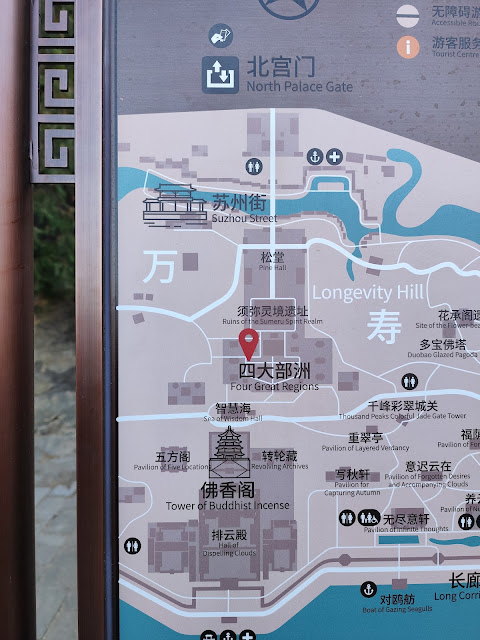































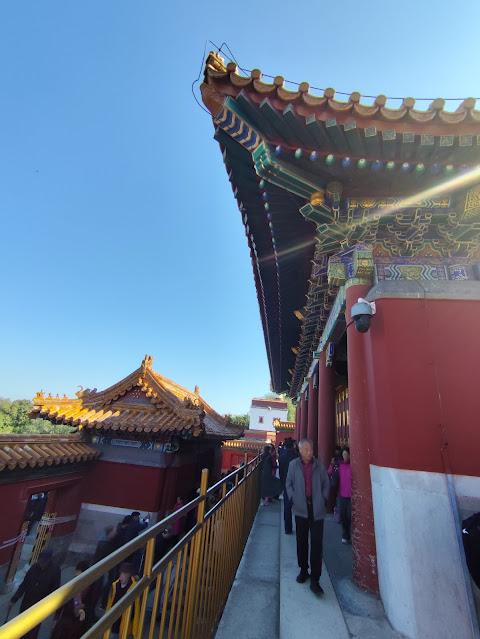




































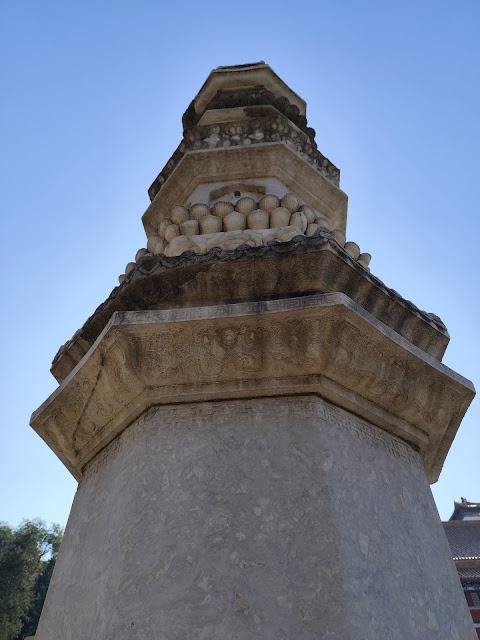




















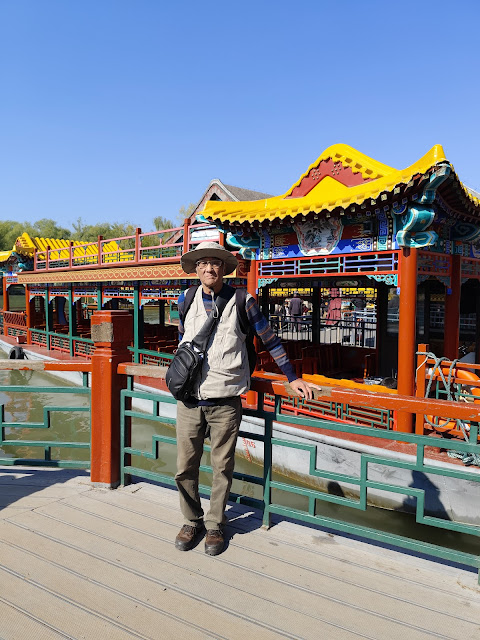












































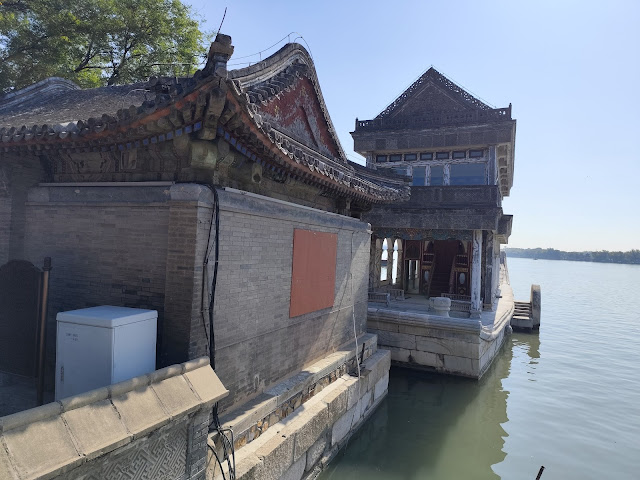


































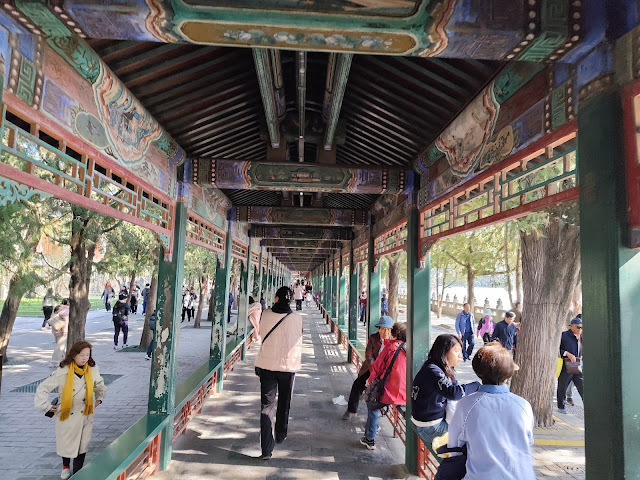
































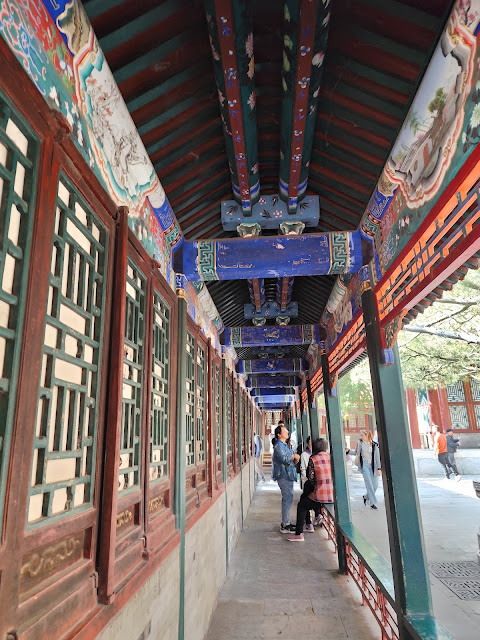













































No comments:
Post a Comment